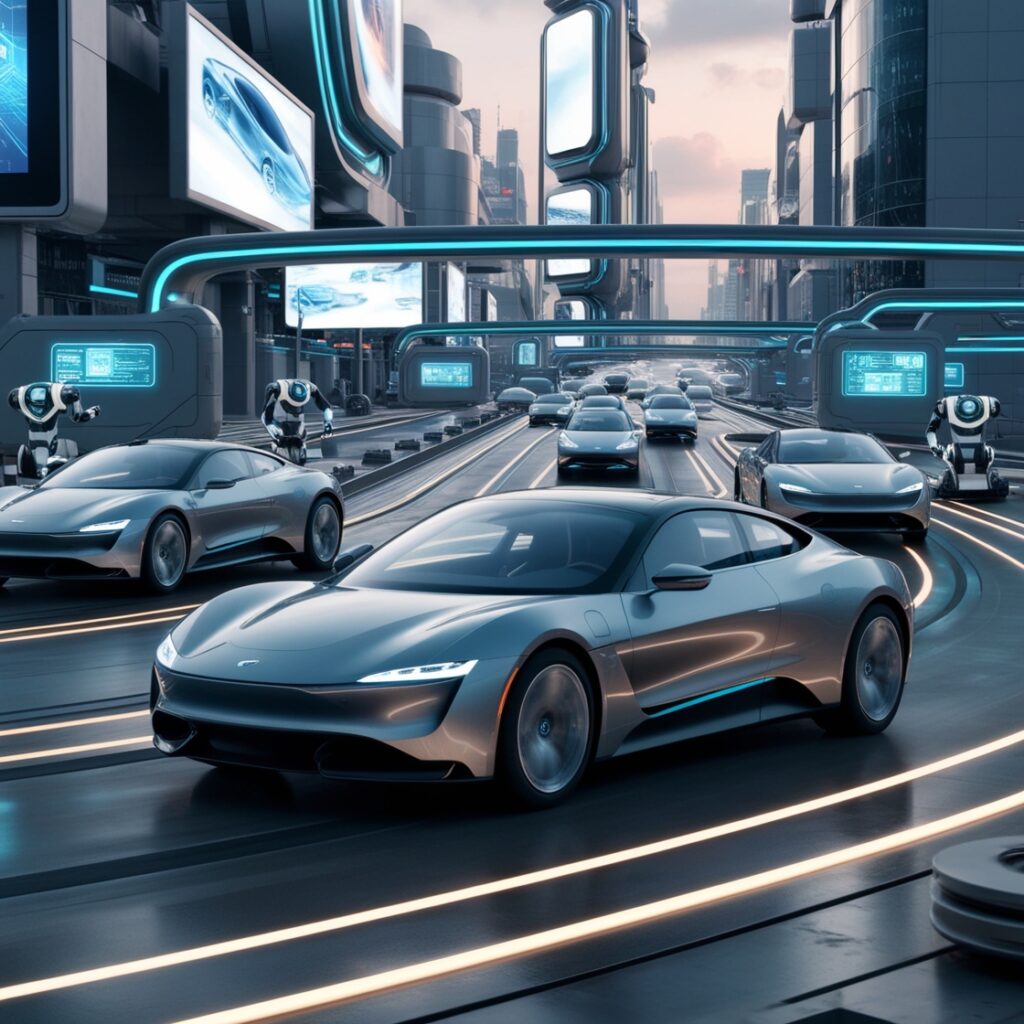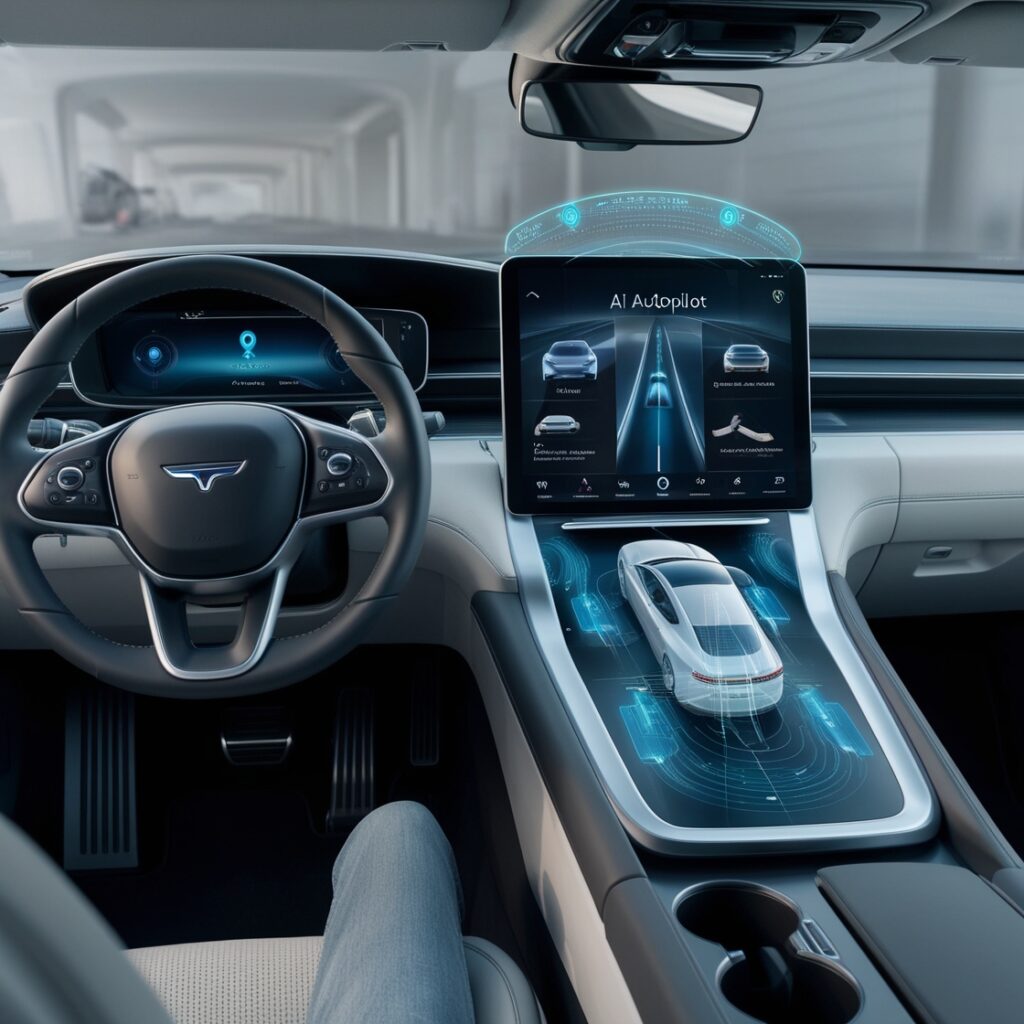How AI Changes Auto Pilot System. The automotive world is transforming as never before. With the rise of AI, traditional autopilot systems are evolving into sophisticated AI-powered autopilot solutions that promise to redefine how we drive. How is this technology changing our driving experience? Let’s dive into how AI changes autopilot systems and what it means for drivers everywhere.
The Rise of AI Auto Pilot Systems in the Automotive Industry

- The automotive industry is at the forefront of a technological revolution. AI has emerged as a game changer, transforming how vehicles operate and interact with their environment.
- Manufacturers are now harnessing machine learning to enhance vehicle performance. This technology enables cars to learn from data collected in real time, adapting to individual driving habits and road conditions.
- As consumer demand for safer and more efficient transportation rises, automakers are investing heavily in AI-driven solutions. From intelligent navigation systems to predictive maintenance features, these advancements promise a smoother driving experience.
- Additionally, partnerships between tech companies and automotive giants have accelerated innovation. By combining expertise from both fields, the potential for groundbreaking products expands exponentially.
- AI’s influence extends beyond just autopilot capabilities; it’s also reshaping entire supply chains and manufacturing processes. The speed of this transformation indicates that we’re only scratching the surface of what’s possible in modern transport.
Advantages of AI Auto Pilot Systems

- AI-powered autopilot systems offer significant advantages over traditional autopilot systems. One of the most notable benefits is their ability to adapt in real time. These intelligent systems analyze vast amounts of data, allowing quicker and more accurate decision-making.
- Another key advantage is improved navigation. AI algorithms can process information from various sensors, including cameras and radar, enhancing route optimization. This leads to smoother rides and reduced travel times.
- AI autopilot technology also prioritizes enhanced user experience. Features like voice recognition and personalized settings make driving more enjoyable and less stressful.
- Moreover, these systems continually learn from each trip taken. As they gather experiences, they become increasingly efficient at predicting potential hazards or traffic patterns.
- The integration of machine learning means that as vehicles are used more frequently, their performance only gets better—making every journey safer and more brilliant for drivers everywhere.
Enhanced Safety Features with AI Auto Pilot
- AI-powered autopilot systems revolutionize vehicle safety. These advanced technologies constantly analyze data from sensors, cameras, and radar to make real-time decisions. This capability allows quicker response times than human drivers.
- One key feature is predictive analytics. AI can anticipate potential hazards based on patterns in driving behavior and environmental conditions. For instance, if a car suddenly brakes, the AI system immediately calculates the safest action to take.
- Moreover, these systems enhance collision avoidance by integrating machine learning algorithms that improve with every mile driven. They learn how different factors—like weather or traffic flow—affect driving dynamics.
- Additionally, driver monitoring features ensure operators remain attentive at all times. By detecting signs of distraction or fatigue, the system can issue alerts or even take control when necessary.
- This multi-layered approach creates an unprecedented level of road safety not seen in traditional autopilot systems.
Challenges and Concerns with AI Auto Pilot
- While AI-powered autopilot systems offer numerous advantages, they also come with a set of challenges and concerns. One major issue is the reliability of technology. Dependence on algorithms can lead to unexpected failures, especially in complex driving scenarios.
- Data privacy is another significant concern. These systems often gather vast amounts of data from users, raising questions about how that information is stored and utilized.
- Moreover, the potential for hacking poses risks. Cybersecurity threats could compromise vehicle control or sensitive user data.
- Ethical dilemmas arise when AI must make decisions during emergencies. An algorithm’s choices may not always align with human values or expectations.
- Regulatory frameworks need help to keep pace with rapid technological advancements. This creates uncertainty around liability issues if accidents occur in autonomous vehicles equipped with these advanced systems.
Future of AI in Auto Pilot Systems
- The future of AI in autopilot systems looks promising. As advancements continue, we can anticipate a more seamless integration of technology into everyday driving experiences.
- Imagine vehicles that can communicate and infrastructure. This could drastically reduce traffic congestion and improve road efficiency. AI-powered autopilot systems may become smarter at predicting road conditions, adapting to weather changes, or even responding to unexpected obstacles.
- Moreover, as machine learning algorithms evolve, these systems will learn from vast amounts of data gathered over time. They’ll refine their decision-making processes and enhance the user experience by providing personalized features tailored to individual preferences.
- As regulatory frameworks develop alongside technological innovations, we might witness widespread adoption sooner than expected. The prospect of fully autonomous vehicles isn’t just a dream; it’s rapidly becoming a reality shaped by intelligent automation strategies in the automotive industry.
Case Studies: Success stories of AI Auto Pilot systems
- Tesla is at the forefront of AI-powered autopilot innovation. Their vehicles use deep learning algorithms to analyze vast amounts of data from their surroundings. This approach has transformed how cars navigate complex environments, continuously improving through real-world driving experiences.
- Waymo, a leader in autonomous vehicle technology, showcases another success story. Employing advanced machine learning techniques, they have developed an AI autopilot system that can handle urban driving challenges with precision and safety. Their fleet operates in various conditions, demonstrating remarkable adaptability.
- Cruise is also making waves in the industry. With its focus on city navigation, this company has integrated sophisticated sensors and artificial intelligence to enhance route optimization and decision-making processes. Their successful trials are paving the way for more widespread autonomous driving.
- These examples illustrate how AI changes autopilot systems across different platforms, creating safer and more innovative transportation solutions.
Conclusion
The evolution of AI in the automotive industry is more than just a trend. It’s a significant shift that promises to redefine driving experiences. As AI-powered autopilot systems continue to develop, they offer remarkable advantages over traditional autopilot systems. Enhanced safety features make roads safer for everyone while also addressing many concerns previously associated with automated driving.
However, challenges remain. The road ahead requires careful navigation of ethical implications and technical limitations. By learning from successful case studies, we see that AI can indeed transform how we perceive and interact with vehicles.
This journey into AI changes autopilot systems is just beginning. With continued innovation and collaboration across sectors, the future looks promising for more innovative, safer travel solutions. As technology advances, embracing this change will be essential for both manufacturers and consumers alike.